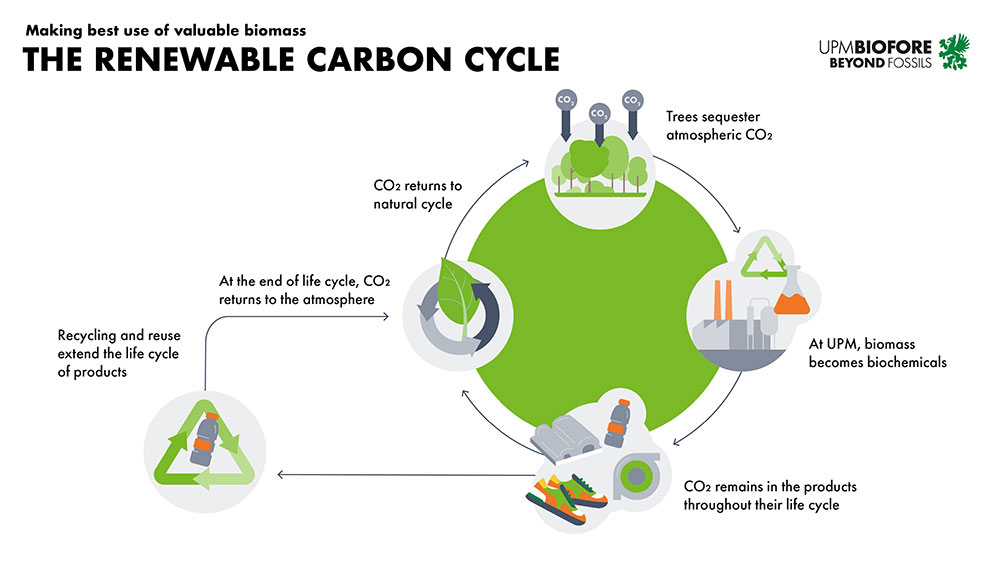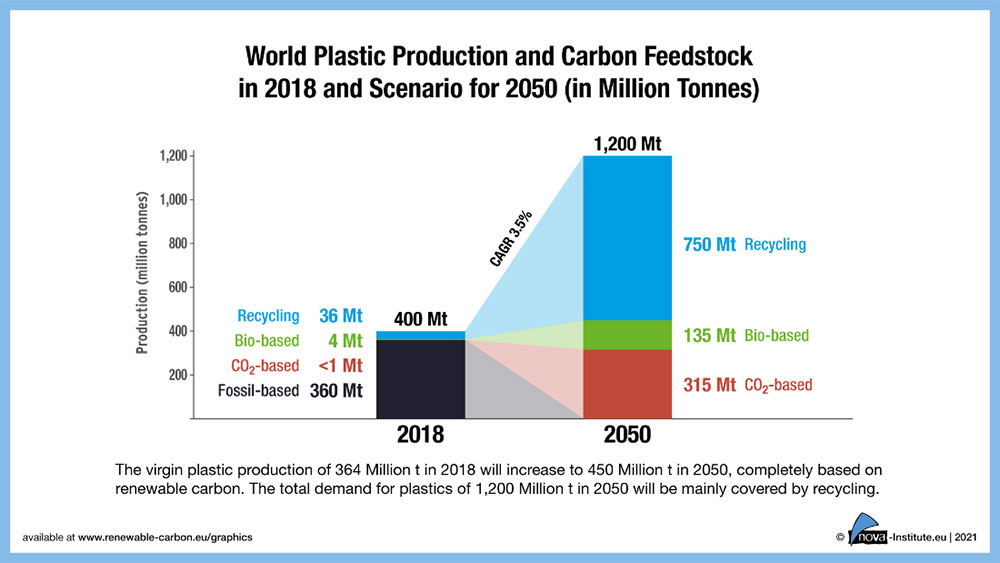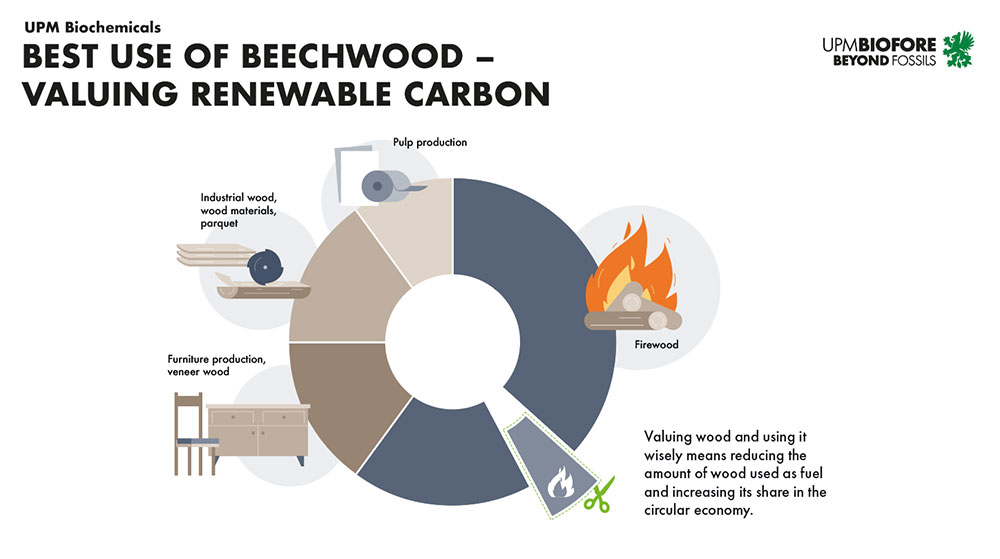It is now categorically clear that only a full phase-out of fossil carbon extraction will help prevent a further increase in the CO2 concentrations in the atmosphere that are contributing to climate change.
Today, about 90% of the worldwide demand for carbon is met by fossil resources – crude oil, natural gas and coal. To transition to a future beyond fossils we must reduce their use. In the energy sector, this transformation is progressing well – albeit slowly. The material sector has some catching up to do. Focus here is on reuse and recycling of existing materials, as the primary source of carbon, and on filling losses in the collection and recycling processes with increasingly greater volumes of renewable carbon, until only renewable carbon is used. This renewable circular economy – or renewable carbon cycle – is the only solution to minimizing resource consumption and effectively addressing the climate crisis.
In the future beyond fossils, the alternative carbon sources available today are: carbon from biomass, from direct CO2 utilisation and from recycling of materials already used. These sources can be called “renewable carbon”. But when a product is manufactured and recycled materials are introduced into an ingredient mixture, a portion of the product will still need new ingredients. If the additional ingredient is made from biochemicals or biomass, then the product will store the carbon from the biomass and take it out of the atmosphere.
“At UPM we believe that woody biomass from sawmill side streams and forest management – FSC™ or PEFC-certified and sourced from regional beechwood forests – can contribute to the fossil-free future”, says Dominik Müller, Senior Manager Sustainability and Market Development, UPM Biochemicals. “Wood is one of humanity’s most ancient raw materials but it can also take us into the future. Replacing fossil and mineral-based materials with wood-based biochemical ingredients will reduce the carbon footprint of products and lock-in carbon sequestered from the atmosphere for the life of the product.”
*FSC N003385, PEFC/02-44-41

Many applications, such as chemicals, plastics and a variety of materials, including textiles, are based on organic chemistry and require carbon in their manufacture on a permanent basis. Whilst we may have success decarbonising energy production and many aspects of transportation with renewables or alternative fuels such as hydrogen, we cannot decarbonise organic chemical compounds built with carbon molecules. Embracing a renewable carbon cycle and valuing carbon’s role in durable, long-life uses is an essential part of a sustainable material world.
Experts at Europe’s nova-Institute have estimated the future demand for plastics to triple by 2050. Most of this will be supplied by recycling plastic that is already in existence.

Credit: Europe's nova-Institute
“By far largest part of the wood harvested in Germany is currently used for energy generation. It is burned. However, its use in long-life and recyclable products would make the best of the renewable carbon provided by wood and have a bigger impact in mitigating climate change. Valuing wood, using it wisely in the post-fossil world means we need to reduce the amount of wood used for fuel and energetic use and increase its material use to foster a circular economy and work towards zero virgin fossil feedstock”, Dominik Müller said. At Leuna, in the German federal state of Saxony-Anhalt, UPM Biochemicals is investing 750 million Euros to enable the transition to renewable carbon for use in the chemical and plastics industries.

No matter what feedstock sources are being tapped into for biochemicals, forests will play a key role in the bioeconomy reaching its full potential to combat climate change.
The bio-mono ethylene glycol (UPM BioPura™) that will be manufactured in the UPM biorefinery in late 2023 will serve as a base material for various industrial products and consumer goods, such as plastic (PET) bottles, packaging materials, polyester textiles, and engine and battery coolants. The UPM BioPura™ will have at least a 70% reduced CO2-footprint, compared to fossil MEG. For coolant applications, where MEG is accounting for more than 90% of product composition, this leads to a CO2-saving of more than 65%, compared to fossil MEG. A glycol mix can be converted into cleaning agents, de-icing fluids, fragrances, and cosmetics. Wood-based renewable functional fillers (UPM BioMotion™) are a completely new, sustainable product and alternative to carbon black and precipitated silica in various rubber end uses such as tyres, hoses, rubber floorings and scores of other rubber applications. With a 90% reduced carbon footprint compared to fossil carbon black, UPM BioMotion™ enables a CO2-reduction over the whole lifecycle of a rubber product. As the functional filler has a low density, it reduces the total weight of a rubber product. A car with rubber sealants reinforced with UPM BioMotion™ has a lower total weight and therefore lower fuel consumption.